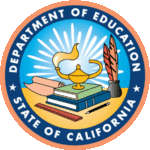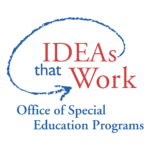This guide, prepared under the direction of the Special Education Division of the California Department of Education (CDE), provides educators with policy and practice for most appropriately and effectively supporting the educational advancement of student with disabilities who are also English learners.
California Department of Education. 2019. California Practitioners’ Guide for Educating English Learners with Disabilities. Sacramento, CA: California Department of Education.
Join hundreds of educators, parents, students, policymakers, advocates, and community members to advance educational equity for California’s students at the 2023 Equity Conference.
San Diego County Office of Education, (2022).
Educational equity means students have access, opportunities, and supports to thrive in school, achieve a meaningful diploma, and lead a choice-filled life. The Equity department supports this effort by providing equity-focused services & resources to schools and districts, charter organizations, independent, and Juvenile Court and Community Schools throughout San Diego County.
San Diego County Office of Education, (2021).
The goal of this project is to improve the quality of information about teaching effectiveness, to help build fair and reliable systems for teacher observation and feedback.
Bill and Melinda Gates Foundation, Learning About Teaching: Initial Findings from the Measures of Effective Teaching Project (2013); Retrieved from https://files.eric.ed.gov/fulltext/ED528388.pdf.
This letter from Secretary Cardona highlights key resources and information about resources from the Department that may be useful in supporting the needs of students with disabilities in particular, including tools for schools to assist students in addressing any disability-based behaviors that could otherwise interfere with their or other students' learning, or that could lead to student discipline or impact safety
Miguel A. Cardona. 2022. Letter from the United States Secretary of Education, dated July 19, 2022. https://www2.ed.gov/policy/gen/guid/secletter/220719.html (accessed September 16, 2022).
This document highlights national data regarding the percentage of time students with disabilities are educated with their typically developing peers. The data are disaggregated by placement, disability, race/ethnicity, and by state.
Office of Special Education Programs. 2022. OSEP Fast Facts: Educational Environments for School-Aged Children with Disabilities. https://sites.ed.gov/idea/osep-fast-facts-educational-environments-school-aged-children-disabilities/ (accessed September 16, 2022).
This document updates and supersedes the Office of Special Education and Rehabilitative Services’ (OSERS) guidance titled Questions and Answers on Discipline Procedures, issued in June 2009 and includes additional questions and answers that address topics that have arisen as the field continues to carry out the discipline provisions of IDEA and its implementing regulations. Key topics include removing a child with a disability from their current educational placement and the responsibilities of individualized education program (IEP) teams to address the behavioral needs of children with disabilities through the evaluation, reevaluation, and IEP development process to ensure the provision of a free appropriate public education (FAPE).
Office of Special Education Rehabilitative Services. 2022. Questions and Answers Addressing the Needs of Children with Disabilities and the Individuals with Disabilities Education Act's (IDEA's) Discipline Provisions
https://sites.ed.gov/idea/files/qa-addressing-the-needs-of-children-with-disabilities-and-idea-discipline-provisions.pdf (accessed September 16, 2022).
This fact sheet summarizes key information from the Supporting Students with Disabilities and Avoiding the Discriminatory Use of Student Discipline under Section 504 of the Rehabilitation Act of 1973 guidance document.
Office of Special Education Rehabilitative Services. 2022. Supporting Students with Disabilities and Avoiding the Discriminatory Use of Student Discipline under Section 504 of the Rehabilitation Act of 1973 - Fact Sheet: https://www2.ed.gov/about/offices/list/ocr/docs/504-discipline-factsheet.pdf?utm_content=&utm_medium=email&utm_name=&utm_source=govdelivery&utm_term= (accessed September 16, 2022).
Guidance from the United States Department of Education Office of Civil Rights describes schools’ responsibilities under Section 504 to ensure nondiscrimination against students based on disability when imposing student discipline. Specifically, the guidance explains how compliance with Section 504’s requirement to provide a free appropriate public education (FAPE) to students with disabilities can assist schools in effectively supporting and responding to behavior that is based on a student’s disability and that could lead to student discipline. By using Section 504’s procedures to identify and meet the behavioral, social, emotional, and academic needs of students with disabilities as required for FAPE, schools can help prevent or reduce behaviors that might otherwise result in discipline. As the guidance explains, when schools do choose to administer discipline for students with disabilities, they must do so in a nondiscriminatory manner.
Office of Special Education Rehabilitative Services. 2022. Supporting Students with Disabilities and Avoiding the Discriminatory Use of Student Discipline under Section 504 of the Rehabilitation Act of 1973 https://www2.ed.gov/about/offices/list/ocr/docs/504-discipline-guidance.pdf?utm_content=&utm_medium=email&utm_name=&utm_source=govdelivery&utm_term= (accessed September 16, 2022).
The BELE Framework is a guide for transforming student experiences and outcomes. It’s designed to integrate across every part of the learning experience, from teaching and learning, schoolwide systems and structures, family, caregiver, and community partnerships, and district and state policies while anchoring students at the center.
Building Equitable Learning Environments Network, (2021).


